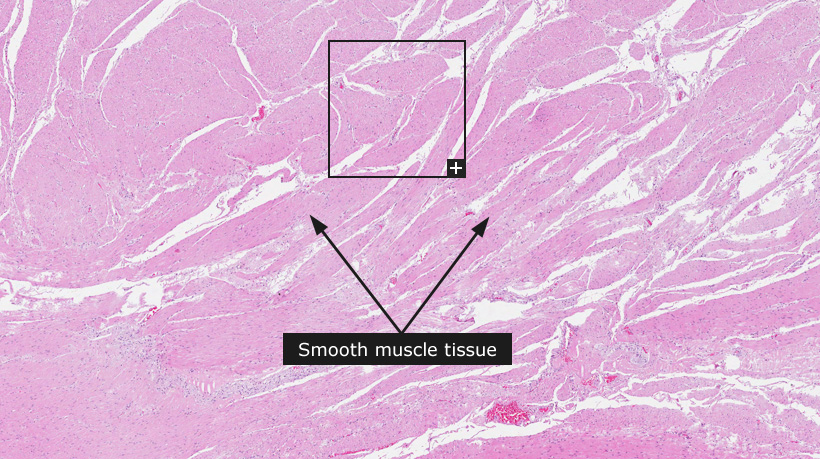DictionarySmooth muscleSmooth muscle
Smooth muscleIn the tissue dictionary, smooth muscle is represented by a sample from the stomach wall. Smooth muscle tissue is defined as a non-striated muscle tissue comprising involuntary contractile elements surrounding tissues and structures where contraction is part of normal function. The main cell type in smooth muscle tissue is the smooth muscle cell, which similar to myocytes in skeletal and cardiac muscle, and predominantly contains actin and myosin proteins. Parenchymal smooth muscle cells are homogeneous and tightly arranged together as larger muscular layers that can propagate movement. Parenchymal smooth muscle typically surrounds and forms an integrated part of the respiratory, gastrointestinal and urogenital tract. The main component of the uterus is also smooth muscle tissue, which allows for contraction and normal function at parturition (childbirth). Smooth muscle is also a vital component of the vasculature, where more heterogeneous smooth muscle cells are located around blood vessels to control the flow of blood. Histologically, smooth muscle cells display a fairly large cytoplasm with indistinct borders and have single blunt-ended oval nuclei. |